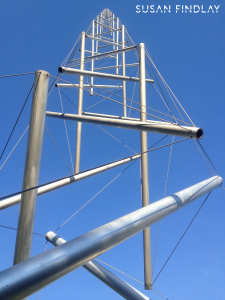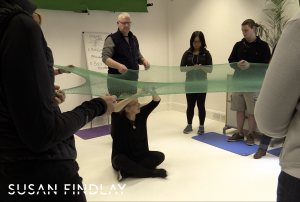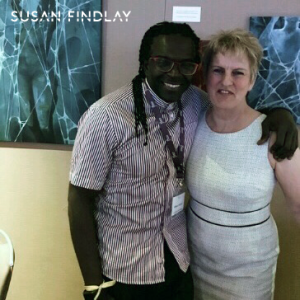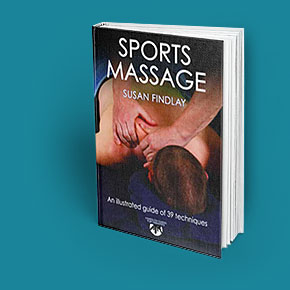Recently the BIG XI conference in Belgium has taken place and I was fortunate enough to be one of the invited guests and as it was an invite only conference, I hope to be able to pass on information to many of you as to what biotensegrity is and the importance of it for our work as massage therapists. With that in mind, I have written this article for you looking at work from five of the world’s leading protagonists in biotensegrity, namely Dr. Wilbour Kelsick, Dr. Stephen Levin, John Sharkey, Msc, Joanne Avison and Dr. Robert Schleip. I believe that through the work of a world renown Anatomist, an Orthopedic Surgeon with over 30 yrs of practice, a Chiropractor who has decades of experience training and rehabbing Olympic Athletes and an advanced Yoga Practitioner who is also a Structural Integrator and has a Master’s Degree in Spiritual Sciences, we will be able to gain an unsurpassed understanding of biotensegrity.
 What is biotensegrity?
What is biotensegrity?
Biotensegrity is a language of wholeness, a conceptual model that is causing a paradigm shift in our thinking about functional anatomy. Biotensegrity refers to soft matter physics using terms such as compression and continuous self-stressing. It is a self organising system that is not gravity dependent and also a stable yet fluid system that operates in a non-linear fashion. It is a non-reductionist view of how our body is held together and how it interacts within itself. I understand that, for some, this new paradigm may not sit comfortably, but overall I believe it gives all of us in our field something to think about.
The idea behind the biotensegrity conferences is that we are open to the changes that are occurring within our field. Practitioners, therapists and clinicians working with the body are beginning to realise that when evaluating the body and the various needs our client’s present with, we need to look at it as a whole – not just view it as individual systems.
This conceptual model, where movement is based on external forces instead of a system of levers and pulleys, integrates well with the biotensegrity principles of compression and tension.
Dr Stephen Levin
Dr. Stephen Levin originally trained as an orthopaedic and spine surgeon and formerly was Clinical Associate Professor at Michigan State and Howard University. Alongside Dr. Donald Ingber, Dr Levin first challenged the mechanical model in the 1970’s & 80’s. He was able to demonstrate that the reduction of human motion to mechanical principles, such as those we are familiar with, has possibly done us all a disservice. Since levers are simple two bar open chains, it can be proved that it is impossible for these chains to act as a component in human locomotion.
 Joanne Avison
Joanne Avison
Joanne Avison is an advanced Yoga Teacher, Yoga Therapist (C-IAYT) and Structural Integration practitioner/teacher. She also acquired a master’s degree in Spiritual Sciences in order to more fully appreciate how mind, body and being, really integrate. She has a fascination with fascia and human architecture which led her to pioneering how biotensegrity distinguishes living movement and form.
Avisons’ work uses netting to demonstrate that by creating a tensional point, the resulting force was felt in every participant’s hands. This is a key point in the understanding of biotensegrity – our bodies rely on the tensile compressional nature of our matrix to form a ‘Whole Triumvirate of balancing counter-forces.’ Through Avison’s netting we are able to truly understand that biotensegrity requires a firm grasp of the basics of how tensional networks operate within soft matter physical forms.
For Avison, movement is not an intellectual process, it is based on the patterns of living matter. Biotensegrity honours humanity as an animated creature, she explores the tensional forces as a whole living functional form using yoga movements demonstrating that ‘everything is attached everywhere to everything’.
John Sharkey
John Sharkey is a renowned clinical anatomist and exercise physiologist. His work with biotensegrity looks at something called the “Full Body Kinetic Chain” (FBCK). This is a conditioning model that integrates training concepts with principles of core strength and conditioning. To explain his model he uses ‘Rope and Sandbell Training’ equipment, which provides a challenging functional movement class. During his demonstrations nothing stands still, everything is engaged in a fluid dance, mobilising the body as a whole. FBKC is far removed from traditional stationary training, which allows for a fun ‘biotensegral alternative’ that involves multiple planes of continuous movement.
Sharkey is also currently working on an ambitious project called The Human Fascial Net Plastination Project that will play a significant role in the education of future generations about the importance of continuity and the interrelationships of all connective tissue. The aim of the project is to preserve anatomical specimens using a method that halts decomposition, therefore allowing us to study human connective tissue and the role it plays in movement.
 Dr. Wilbour Kelsick
Dr. Wilbour Kelsick
Dr. Wilbour Kelsick specialises in elite athletic performance and rehabilitation, using applied functional anatomy. In his discussions around ‘biomovement’ versus biomechanics, Kelsick is able to expunge a few of the long held beliefs about what needs to occur in order for movement to happen i.e. ‘ligaments do not crumple during a bicep curl, the tension is still there, tension is always associated with compression, as well there is no need for the reciprocal muscle groups to relax in order for movement to happen.’ Concepts that will indeed challenge current dogma.
When assessing function, Kelsick looks at the body as a whole rather than as a collection of separate parts. When using exercises to demonstrate biomovement, Kelsick uses those which eliminate the fulcrum. For example, instead of using a bench press, which stops the scapula from moving freely thus creating a closed chain exercise which in turn locks the shoulder joint, he would suggest that the athlete remain upright using pulleys in multiple planes to strengthen the upper torso.
Dr Robert Schleip
Dr Robert Schleip is a human biologist and psychologist. His area of expertise is fascia research. Although biotensegrity is separate to fascia, many of concepts relating to fascia such as: muscles are sinergists not antagonists; they are funiculars, not trains, and there is continuous tension rather than discontinuous compression, help clarify our understanding of what exactly biotensegrity is. Dr Schleip is currently researching connective tissue behaviour and its repair and function at his centre in Germany. Much of his research is integral to our understanding of biotensegrity.
Looking at movement in particular, Dr Schleip work has focused on the behaviour of the achilles tendon in response to load, both Levin and Schleip refer to this as ‘auxetic behaviour’. If you stretch the achilles tendon, rather than it getting longer and narrower in the middle, it was shown to get wider. This a behaviour only seen in tendons. The resulting effect on the tissue when force is applied had a negative Poisson’s ratio, which means the tissue became thicker perpendicular to the applied force making auxetics useful as a shock absorbing material.
He is also currently studying the importance of activity in tissue health. Comparing the skeletal muscle morphology and the regulatory signaling in endurance trained athletes with that of sedentary individuals. Unsurprisingly, the endurance trained subjects showed a significant increase in the density of the connective tissue when compared to the untrained subjects. When you run regularly you develop more crimp undulations in the proximal and distal portions of the tendon than a sedentary control person would. By practicing recoil exercises, you gain a benefit not available from other forms of exercise in that you change the architecture of the tendon and get more of the crimp which is associated with the recoil capacity of the achilles tendon.
In conclusion, I think one of the most important concept for us to understand is that the rules of soft matter and non-linear biological forms have evolved from models we have been using for the last 400 years. I know that most new discoveries are met with resistance, letting go of cherished old theories and replacing them with new ones can be traumatic, especially for those with much invested, but hopefully this article, and the conference I attend this week can give us all some food for thought. Perhaps we can digest some of the concepts without needing to accepting them all blindly.

